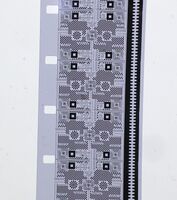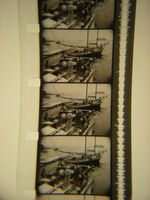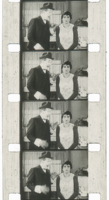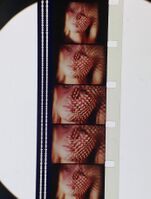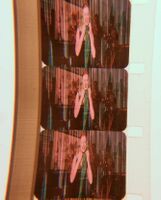| Welcome to Sprocket School! This project is maintained by volunteer editors. Learn more about how this works. |
16mm sound formats: Difference between revisions
Jump to navigation
Jump to search
| Line 11: | Line 11: | ||
File:16mm test film.jpg | File:16mm test film.jpg | ||
File:16mm-mono-single.jpg | File:16mm-mono-single.jpg | ||
File:16mm Silent.png | |||
File:16mm film frames.JPG | |||
File:16mm-scope2.jpg | |||
</gallery> | </gallery> | ||
[[Category:16mm]] | [[Category:16mm]] | ||
Revision as of 22:11, 15 October 2025
- mono - various types (mauer, single track, etc) (stereo was developed in the 1990s and some Eastman projectors have readers for this but no prints were made)
- silent (double perf vs. single perf)
- sound from external sources (digital file, cassette tape, radio, etc.)
- mag stripe (rare for standard projection settings but comes up with home movies and artifacts like Scopitones)
- production elements you may run into (e.g. fullcoat)
- DTS exists in very rare, semi-experimental cases, but this is not something you will run into in an ordinary projection setting.
Gallery
-
An example of a Mauer track.

